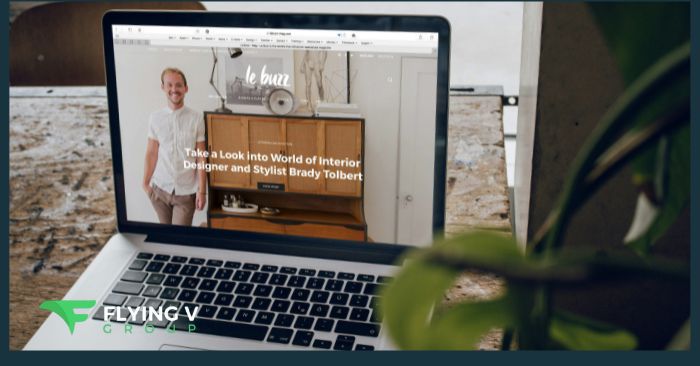Your website is often one of the very first points of contact that a prospect or client has with your brand. First impressions matter and a well-designed WordPress website can funnel your leads toward taking the actions you want them to take on your website, whether that’s signing up for a newsletter or scheduling a call with you.
Website design trends don’t stand still. As consumer needs evolve, the platforms from which they access your web content change—from desktop to mobile and now to VR and AR. Exactly what constitutes a good WordPress site is being constantly redefined.
As we move into 2024, and as your target audience gradually returns to normal buying patterns, it’s the perfect time to give your WordPress site a once-over, and to make key updates in line with 2024’s emerging design trends. In this piece, we’ll discuss some of the hottest WordPress design trends for 2024 and how you can use them to turn your website into a lead-generation machine.
Leverage Augmented Reality Plugins to Offer Immersive Experiences
Both augmented reality (AR) and virtual reality (VR) have seen a significant rise in popularity over the past few years, thanks to smartphone AR and billions of dollars in investment by the likes of Google and Facebook. In practice, what this means that your leads are used to using AR mini-apps with their phone cameras in daily life, for everything from QR-code coupons to virtual changing rooms for clothes. It’s a good idea consider ways in which AR or VR experiences can be integrated into your brand and products, offering something meaningful to your users without confusing or inconveniencing them.
If you’re a brand that sells physical products like jewelry, clothing, or furniture, AR is a great way to help users understand how your product might fit into their daily lives. An online furniture seller, for instance, could leverage AR to help users see how a particular sofa or armchair would fit in their living room in terms of size, color, and style. The AR for WordPress plugin is a great option here. It’ll allow you to import 3D models onto your WordPress site and then superimpose them on the user’s smartphone camera view.
If you’re a service-based brand or offer a fully digital product, there are still ways to integrate AR into your website in a way that’ll propel users down the funnel. If your product is a SaaS service, for instance, you could add a QR code to your desktop website— visitors could download your smartphone app by scanning the code and getting a signup bonus.
The key to smoothly integrating AR into your WordPress site is to ensure that you’re not just hopping on the bandwagon – add an AR experience that will meaningfully drive leads to learn more about your product or take action.
Another key consideration is in terms of optimizing your asset size. When you’re dealing with mobile websites, page load time is a critical SEO factor. Conversion rates plunge by 20 percent if you add just an additional second to page load time. 3D models for AR are often large files. This means that a “less is more” approach is optimal. Use less complex models, and don’t try to throw your entire product inventory into your AR tryout section. Monitor how integrating AR impacts your page load times, then iterate until you’re at a good place.
Intelligently use Popups, Exit Intent Messages, and Other Sticky Elements
No one likes popups. but that doesn’t mean you shouldn’t make strategic use of them on your business website. Exit intent, popups, signup forms, and other “sticky elements” all exist to drive users to take specific actions. That action could be to put an item in their checkout cart, sign up for your newsletter, schedule a free consultation, or something else.
The key to using “sticky” UI elements is to be judicious about when and where they are displayed. Exit intent popups are a great example. These are calls to action that come up after the user’s either spent a given amount of time on a website or makes a UI interaction (scrolling up or moving their mouse cursor towards the top left) that indicates that they may be about to exit the webpage. The exit intent popup creates friction to keep them on the webpage but, more importantly, to direct them to an offer or action that may be more relevant than what they were exiting from.
Let’s say you’re a SaaS company with a subscription service. A user visits your purchase page and your pricing structure just isn’t a good fit for them. As they’re about to exit, however, an exit intent popup displays, offering 30 percent off for the first six months. A properly designed exit intent popup, with text that urges immediate action, can drive significant conversions.
When we worked with Envirocool, for instance, Flying V Group was able to increase the conversion rate for a particular exit intent popup to 30 percent by making judicious tweaks to the text using a tool called ConvertFlow.
Remember always to have a strong CTA for sticky elements more relevant than whatever they’re seeing on your page by default. Urge a specific, time-bound action, “Last-chance sale, buy now and get 15 percent off,” instead of “Click here to Checkout,” for example.
Also, it’s wise to remember when not to use popups and other sticky elements. If your users are already somewhat committed to your website —if they’re spending time browsing one of your blogs, for instance—random popups could drive them away at a critical moment. If you fill your homepage with too many popups and CTAs, users could feel that your website is spammy or untrustworthy and bounce away. Tools like ConvertFlow can easily be integrated into your WordPress site to help you test and optimize sticky UI elements and find the fine balance between driving action and spamming the user.
Going Beyond Responsive Design: Optimize Your Design for Multiple Formats
In today’s world, your prospect has multiple options for browsing your website. They might log in from a desktop PC, their phone, or even the VR browser on an Oculus Rift. Responsive design refers to an approach to WordPress web design where your UI elements scale in shape and size, so that users have a great experience on your site, regardless of their platform. Plugins like WPTouch are a great starting point on your responsive design journey. However, it’s important to go a few steps further.
At Flying V Group, we undertake regular UI and CTA audits for client WordPress sites, especially after new content or interface elements are added in. Responsive design is often as much a quality control process as it is a web design philosophy. Many times, we see websites that are 80 percent of the way there in terms of responsive design, but issues like a sore thumb and adversely impact the user experience.
A pop-up that looks fine on desktop might swell up to fill the whole screen on mobile if it isn’t scaled down, and it might lack a close button to get rid of. Formatting and font sizes might not work as intended, and multi-column tables could have bits cropped out. Even if you’ve invested in responsive web design, it’s critical to go back and check every single page on your WordPress site, ideally from a range of hardware platforms—including tablets and smartphones— that your leads might use to access your content. Go through, identify flaws, fix them, and iterate.
Conclusion
Businesses worldwide are looking at a return to normalcy or something close to it. This means that there are immense opportunities worldwide. Making your website stand out is a fantastic way to capitalize on this. The best way to do that is by leveraging emerging WordPress design trends to transform a stagnant business website into a base for your online lead generation efforts.
As an agency handling web design in Orange County, FVG has years of experience helping businesses turn their web content into a cornerstone of their digital marketing efforts. Reach out to FVG today. We’ll schedule a free consultation call and get the ball rolling to transform your WordPress site.
SHARE THIS POST
Thank you so much for reading WordPress Website Design: The Trends You Need to Know About for 2024 . We really appreciate it! If you have any questions about our article, or can suggest any other topics you think we should explore, feel free to let us know.
Be sure to sign-up for our newsletter to receive monthly emails on all of the latest trends and happenings in the digital marketing space. You will also receive our FREE E-Book with the Amazing Marketing Tools for Powerful Business Growth. Sign-up below!
Also, if you received some value out of this article, please share with your friends or colleagues, or leave a comment/question below. We really appreciate you reading our blog and every share/comment means the world to us and allows us to continue producing valuable tools to help you grow your business!






0 Comments